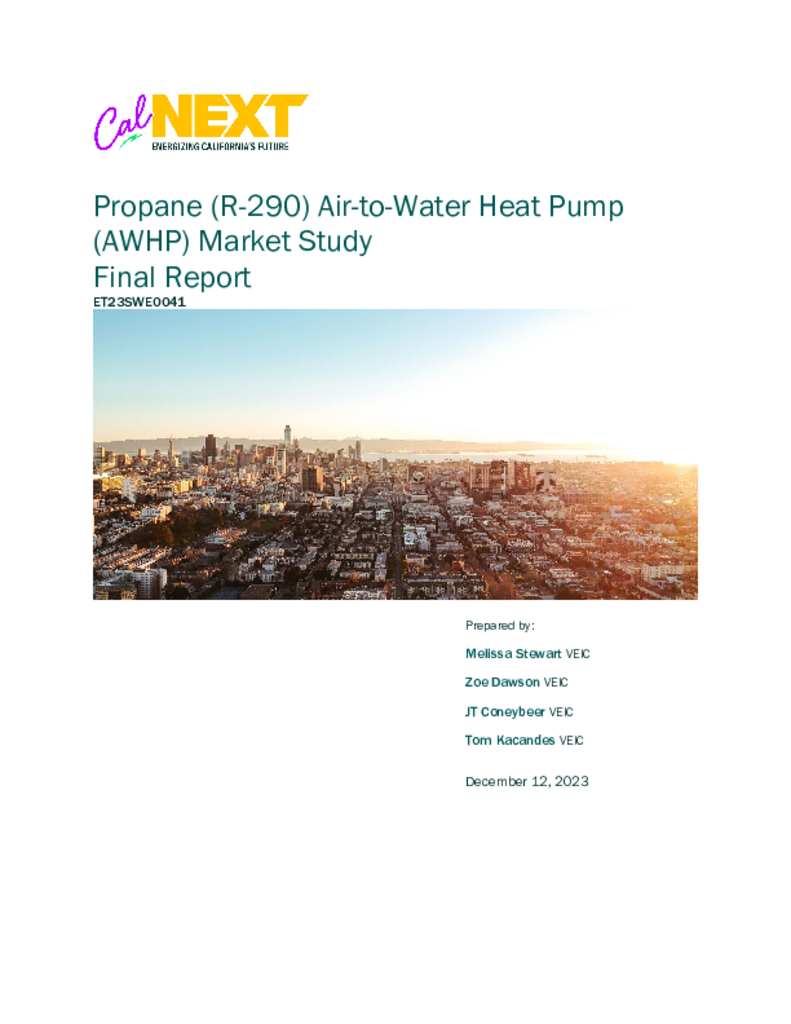ET23SWE0041 - Propane Air to Water Heat Pump Market Study
VEIC will investigate the potential market opportunity and decarbonization impact of installing propane-based air-to-water heat pumps (AWHPs) in residential and commercial buildings across California.
Traditional heat pumps use hydrofluorocarbon (HFC) and/or hydrofluroolefin (HFO) synthetic refrigerants, which are super-potent greenhouse gases. Propane-based AWHPs, on the other hand, are an exciting alternative technology due to propane’s extremely low global warming potential (GWP) value. While manufacturers are transitioning heat pump technologies to use lower GWP refrigerants, this will only reduce refrigerant-based emissions, whereas switching to propane as a refrigerant will essentially eliminate them. Through parallel research efforts, VEIC has already estimated that refrigerants in existing residential homes central and window air conditioning (A/C) units emit over 40 million MTCO2e. Propane-based AWHPs may be the fastest way for California to achieve SB 1383 targeted HFC reductions of 7.5 million MTCO2e.
Propane-based AWHPs have also been shown to have a higher coefficient of performance (COP) compared to other AWHPs, meaning they can deliver more heat output per unit of energy input, resulting in less energy waste and significant cost savings, on top of lower greenhouse gas emissions over time. Additionally, propane-based AWHP can provide domestic hot water heating in addition to space heating and cooling, offering additional decarbonization benefits including thermal storage and controls for future load flexibility.
Outside of the US, propane-based AWHPs are commercially available for both residential and commercial applications and manufacturers have indicated plans to bring this technology to the US. However, a lack of clear regulations and unit ratings by industry bodies makes inclusion in utility incentives difficult.
This purpose of this market study is to help lay the groundwork for program portfolio and customer adoption of propane-based AWHPs by reviewing the current US-based regulatory and market barriers, providing an overview of the potential residential and commercial market size for California, and estimating energy and emissions savings. This study will provide useful insights for policymakers, industry stakeholders, and investors interested in advancing this technology’s potential benefits across California.

